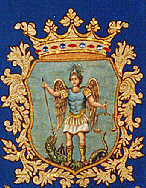
Located along the Apennines, according to historical tradition the name of this beautiful country probably derives from the cult of Saint Michael the Archangel, and the population of the Lombards, which gave rise to the place. Around the second half of the ninth century it began building the castle. It became the seat of the diocese and was built around the XI century Cathedral of St. Anthony Martyr, under Pope Gregory VII, decorated with baroque finishes after the earthquake of 1664.
During the Angevin period, Sant’Angelo lived a prosperous period thanks to several feudal families that ruled, the de Gianvilla, the Caracciolo, who established the University of Sant’Agelo and Imperial.
During the Napoleonic period the town became the capital of one of the three administrative districts in which was divided the province of Avellino.
Despite the devastating 1980 earthquake Sant’Angelo today retains a pleasant medieval village developed around the castle.

 Add to favorites
Add to favorites